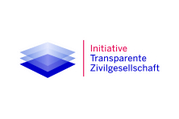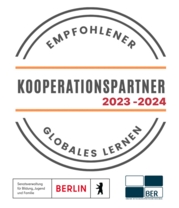Kommentar: Klimapolitik und Weltbank
01.12.2007: Gemeinsam mit den Nichtregierungsorganisationen Campagna per la Riforma della Banca Mondiale (Italien), International Rivers (USA), Berne Declaration (Schweiz) und dem Bretton Woods Project (Großbritannien) hat WEED einen Kommentar zum Weltbankarm 'IDA' und Klimapolitik bei der Weltbank eingereicht. Anlass war die Wiederauffüllungsrunde für IDA, bei der das Klimathema verhandelt wurde.
Comments to the IDA deputy document
November 30th 2007
Submitted by:
Campagna per la Riforma della Banca Mondiale, Italy
International Rivers, USA
WEED, Germany
Berne Declaration, Switzerland
Bretton Woods Project, UK
The World Bank recognizes the devastating impacts that climate change is already having in poorest countries. Yet it fails to provide sound ideas for effective investments to stop climate change while contributing to poverty reduction. Donors have in turn failed to use the political space offered by the IDA negotiations to influence the Bank and demand a clear shift in energy investment in poorest countries and of the overall energy portfolio of the insititution.
In the document "IDA and Climate Change: Making Climate Action Work for Development” presented by the World Bank at the Dublin meeting, the Bank clearly states that "these negative potential impacts of climate change in IDA countries require appropriate adaptive measures”. Adaptation and market based solution are however not an adequate answer to climate change in IDA countries, which will suffer the most direct impacts of climate change. IDA resources should also aim at bringing alternative solutions to the energy needs of the poorest, such as financial investment in renewable energies like photovoltaics, windpower, and small and sustainable hydro. These investments will increase energy access of the poor and contribute to mitigating climate change at the same time.
To "maintain a steady level of net benefits to clients in the face of climate change” is not an ambitious objective for an institution with poverty reduction through sustainable development at the core of its mandate. As recognised by the Bank, climate change and environmental disasters will increase poverty in developing countries. While stating that "in addition to adaptation, selective mitigation actions - such as expanding access to clean energy (including through regional projects) (...) can help support development efforts in IDA countries while reducing global greenhouse gas emissions”, the Bank lacks a clear definition of clean energy technologies.
As affirmed by CSOs at the consultation with Bank staff and management at the 2007 Annual Meetings, such a vague approach opens the way to the inclusion of large hydropower projects in clean energy frameworks. This is misguided since large hydropower projects often have serious negative impacts, including reservoir emissions, degradation of freshwater ecosystems and impoverishment through involuntary displacement. Also, they often do not address the energy needs of the poorest - as demonstrated by the World Commission on Dams. The risk of including unsustainable hydropower projects is confirmed by vague assertions in the draft document of IDA deputies that "larger facilities for water storage will be needed in many parts of the world”. Examples of the so-called "low-carbon energy projects” listed at page 33 of the "IDA and Climate Change” document include a number of contested large hydropower plants which had an absolutely negative impact in terms of poverty reduction.
Nam Theun II in Laos is just one of these controversial projects financed by the World Bank, with massive social and environmental impacts and inadequate mitigation measures. Nam Theun 2 may result in substantially higher greenhouse gas emissions than combined-cycle natural gas plants generating the same amount of electricity. The characteristics of Nam Theun 2 - a tropical reservoir with a large drawdown zone - are similar to those of Brazilian reservoirs where high methane emissions have been measured. Extrapolations from the average net emissions per square-kilometer flooded area calculated for four reservoirs in the Brazilian Amazon indicate that Nam Theun 2 could emit the equivalent of nearly 5 million tons of carbon dioxide every year. By comparison, a natural gas combined-cycle plant generating the same amount of electricity as Nam Theun 2 would emit the equivalent of around 2.53 million tons of carbon dioxide. In other words, Nam Theun 2 could have twice the greenhouse gas emissions and climate impacts of fossil fuel alternatives.
Financing "low-carbon” projects that have a negative impact on poverty reduction, or financing projects for poverty reduction that have a negative impact on climate change is not a "win-win” strategy. The World Bank should use its knowledge to select projects which both contribute to the eradication of povery and to reduce GHG emissions.
There is no ground for the Bank to affirm that "other projects, such as ‘clean’ energy investments,may yield lower net benefits compared with ‘traditional’ energy projects - in these cases, however, a subsidy provided by carbon finance may make the clean project competitive with the traditional one.” Independent research1 proves that investing in clean energies in poorest areas has an absolutely positive net benefit, since in most of the cases it means providing access to energy to those 2 million people still living off grid. The above affirmation in the IDA document shows the minimal commitment of the insititution in cathalizing investments for the development of renewables energies in poor countries. Up to now, less than 5% of the energy portfolio of the World Bank Group is financing renewables.
In this sense, the suggested reform about "reviewing private sector development indicators in view of the increased emphasis on private sector in IDA 15 and closer collaboration between IFC and IDA” does not ensure an improvement in terms of catalysing private investment for a sound response to poverty, climate change and energy needs in poor countries. The recourse to innovative financial garantee mechanisms, as proposed in the latest draft of the document, could be effective only if oriented to truly clean energy technologies. For an effective and coherent use of limited public development finance, the Bank should phase out financing for fossil fuel and only finance hydropower projects if they comply with WCD recommendations. From a perspective of an efficient spending of development finance, it does not make sense for the Bank to continue extensive lending to the private sector operations contributing to GHG emissions increase, while giving limited IDA resources to help the poor adapt to the climate chaos partly fuelled by irresponsible lending to the private sector.
1 How the World Bank’s Eenergy Framework sells the Climate and Poor People Short”, September 2006










 09.01.2024 | Digitales Multiplikator*innen Seminar zum Thema Sport, globale Lieferketten und Fairer Handel am 18.01.25 // 10-12 Uhr
09.01.2024 | Digitales Multiplikator*innen Seminar zum Thema Sport, globale Lieferketten und Fairer Handel am 18.01.25 // 10-12 Uhr